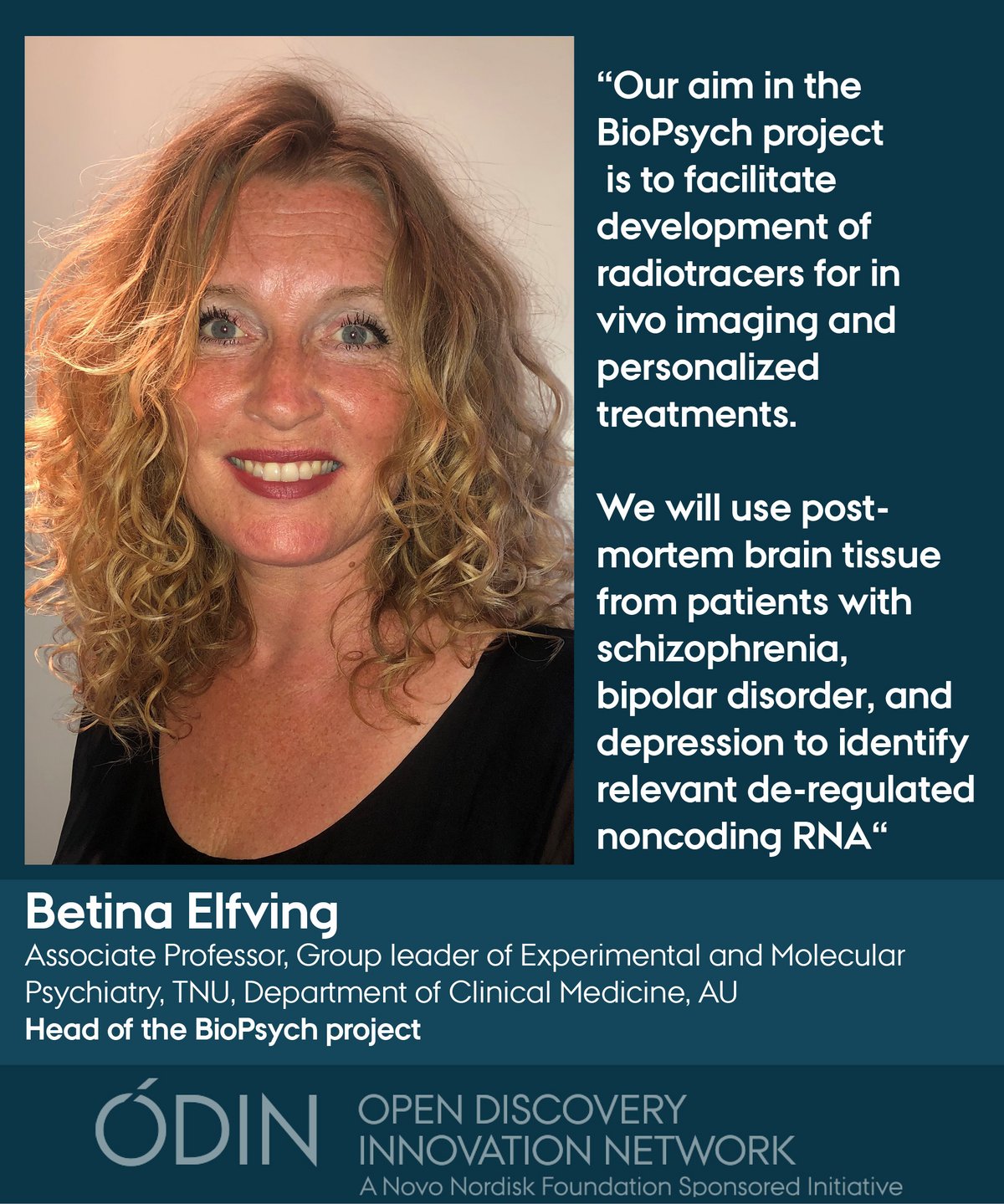Aim of the BioPsych project
The BioPsych project team will use the Danish Brain Collection to identify biomarkers in the human psychiatric brain. The AU project team collaborates with researchers from Bioneer and omiics.

Identification of biomarkers in the human psychiatric brain - focusing on non-coding RNAs and sex differences (BioPsych)
Mental disorders, like schizophrenia (SZ), bipolar disorder (BD), and depression (DE) are leading causes of disability worldwide. The diagnoses are based only on symptoms, which is problematic, as these are partly overlapping. Sex differences in prevalence, symptoms, and responses to treatment have also been reported, supporting the complexity of the disorders.
Therefore, there is an unmet need to identify biomarkers. The BioPsych project will identify RNA targets that can bind radiotracers for in vivo imaging and function as leads for innovative stratified treatment. The strategy is to identify deregulated ncRNAs, such as microRNA (miRNA) and circular RNA (circRNA) in core brain areas of psychiatric disorders (hippocampus and prefrontal cortex) using unbiased profiling.
The brain tissue stem from patients (60 males/60 females) diagnosed with SZ, BD and DE from the Human Brain Bank in DK. Proof-of-concept unbiased profiling of miRNA has been conducted and data will be available for the project, ensuring a successful outcome of the proposed project. In collaboration with Omiics, deregulated circRNAs will be identified. Candidate top-5 lists with miRNAs and circRNAs will be generated distinguishing between diagnoses and sex differences. In collaboration with Bioneer, ISH will be performed using state-of-the-art techniques. Based on the ISH results two superior miRNA/circRNA biomarkers will be selected. Anti-miRNA and anti-circRNA will be radiolabeled and tested in vitro followed by ex vivo rat distribution studies. Finally, in vivo pig emission tomography studies will be conducted. The project will create value for a broad audience by 1) providing knowledge about techniques, that can be used to develop solutions for other disease groups and 2) identifying putative ncRNA targets, therapeutically relevant for e.g. Lundbeck and RICC.
Hence, the project will benefit from an open research platform where any company can buy-in on a particular field of use, and the gained knowledge can be translated into novel treatment regimes by involvement of additional experts in a commercialized environment
Participants:
AU: Betina Elfving, Translational Neuropsychiatry Unit (TNU), Department of Clinical Medicine
AU: Jørgen Kjems, iNANO/Department of Molecular Biology and Genetics
AU: Lasse S. Kristensen, Department of Biomedicine
AU: Dirk Bender, Department of Clinical Medicine
AU: Erik Kaadt, TNU, Department of Clinical Medicine
omiics Aps: Morten Venø
Bioneer A/S: Boye Schnack Nielsen
